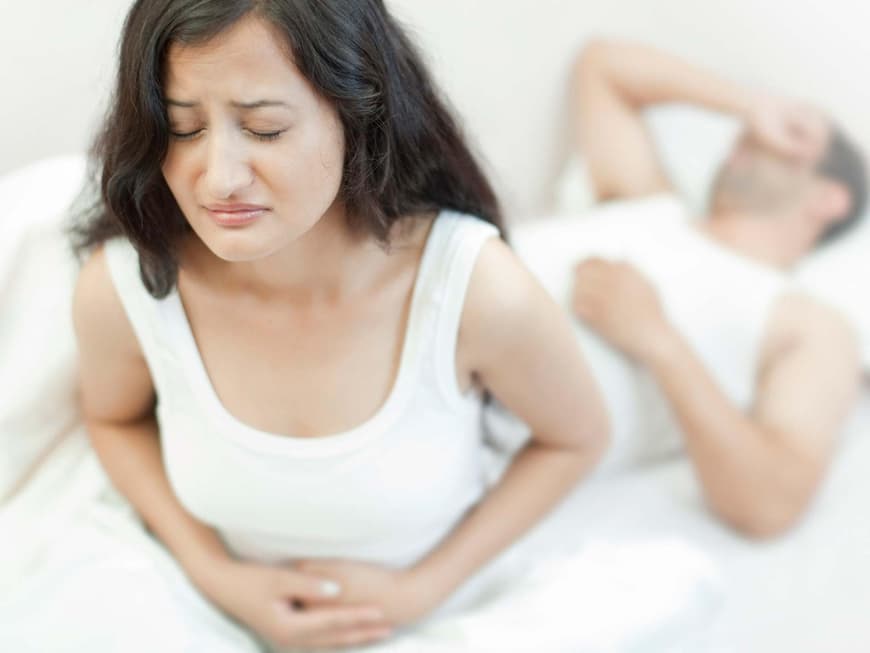
What is vaginismus?
Vaginismus or vaginal cramp refers to the spasmodic contraction of your pelvic floor and the outer third of the vaginal muscles. As a result, inserting an object is only possible with pain. In very severe cases, even inserting a tampon is impossible for the woman. There are persistent disorders and those that recur. Vaginismus belongs to the category of sexual dysfunction and pain disorders and can place a heavy physical and psychological burden on those affected. It is important to note that vaginismus only occurs when penetration of the vagina is impossible, even though the woman expressly wants it. If the woman does not want penetration, the contraction of the muscles is a natural function of the body and not vaginismus. Even if the cramps are isolated and brief, they are not considered vaginismus and this mild form does not require treatment. Doctors differentiate between two forms of the condition:
- Primary vaginismus: The person affected has never been able to have sexual intercourse.
- Secondary vaginismus: The vaginismus only occurred after childbirth or an operation.
A distinction is also made as to whether vaginismus always occurs or only in certain situations, such as at the gynaecologist's, although sexual intercourse is normally possible. In this case, the trigger is fairly easy to find and can be treated more specifically than if the cause is unclear.
Causes of vaginismus
As a rule, physical conditions and a psychological trigger come together. These triggers can be many and varied:
- A traumatic experience such as rape, but also bad/painful experiences during sex.
- Unpleasant experiences at the gynecologist.
- Pain if you suffer from vaginal dryness during/after your menopause.
- An inner rejection of your partner or your own inner unwillingness to have sexual intercourse with your partner.
- Insecurity or rejection of sexuality, for example due to your own upbringing, when everything sexual was demonized and rejected.
Treatment of vaginismus
In order to have a fulfilling sex life, it is essential to treat vaginismus. The first step is to rule out or treat any physical causes. Your gynaecologist can also give you valuable advice and, if necessary, support you with medication. If you have had a negative sexual experience or always have the same trigger, this should be discussed with your partner. Only then can your partner adapt to the problem and respond to you.
The aim of treatment is for you to learn to release the tension and allow penetration (again). There are various exercises that can help you to relax your muscles. It is not necessary to stretch the muscles, but it is necessary to "desensitize" them so that they no longer overreact. Your vaginal entrance can be stretched far enough for a baby to fit through. It is therefore by no means too tight for a penis to be inserted. But the tension ensures that penetration is only possible with pain. Desensitization helps against this. There are different "sticks" with different diameters that can slowly get your vagina used to penetration again. It is important that you take your time and listen to your body. Of course, "exercises" such as oral sex with your partner are also permitted, as long as they are pleasant, so that the brain associates touch positively and not negatively.
Training your pelvic floor muscles can also help you to control them better. Exercises teach you how to consciously tense and relax the muscles. This can also help during sex and well-trained pelvic floor muscles are also helpful for orgasm and strengthen bladder function. And sometimes even the use of lubricant can help if the vaginismus is caused by pain due to insufficient moisture.
Psychological reasons
If there is trauma, psychological help should be sought. Vaginismus is then only a symptom of the trauma. However, resolving the vaginismus does not resolve the trauma. Talk therapy or a group consultation can help you in this context. For milder causes, talking to your partner can help you to regain the security that relaxes you.
